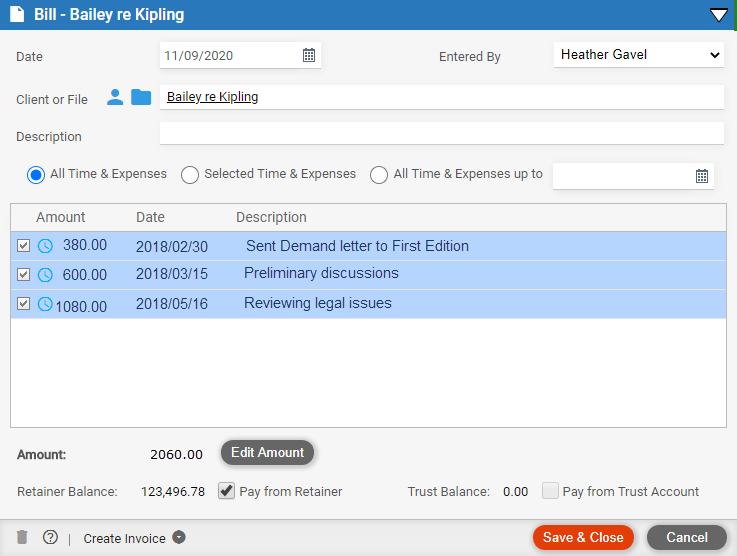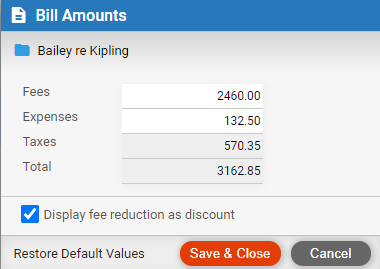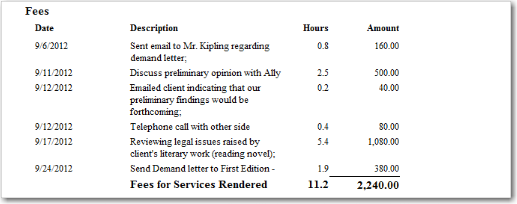
Or, from the Amicus taskbar in any view, click the down arrow next to New

Billing > Create a draft bill
A bill may contain time entries and/or expenses related to a particular file or client, as well as applied payments from trust or general retainer.
You can save a bill in draft before it is finalized (and an invoice sent to the client) so that users can first review and make changes. To bill multiple files or clients at a time, see Batch billing - Create multiple draft/final bills.
Bill done on a client with multiple files: Will be finalized as a single bill with multiple invoices, one per file. These invoices are saved as separate PDF or Excel computer files.
Time entries and expenses: Ones included on a draft bill may be edited. However, once the bill is finalized and invoice(s) created, you can no longer edit the entries.
Primary
client: You must assign a primary client to the file before you
can create invoices on it.
You can create a bill on a specific file even if there are no new fees or expenses on the file. This allows you to send a "status" invoice to the client, which would show a change in the AR balance if a payment was made since the last invoice.
In the WIP
view of Billing, select a file or primary client and click New

Or, from the Amicus taskbar in any view, click the down arrow next to New

Enter details

Date: AR (account receivable) date.
File or primary client: If you select a client who is the primary client on multiple files, a single bill will be created (excluding any fixed fee files).
List and select items:
Choose to list and preselect all time entries and expenses on the file(s), or list and preselect all entries up to a specified date, or simply list all time entries and expenses on the file(s) without preselecting them.
In the
list of entries, select the ones you want on this bill and clear the ones
you don't.
Total
amount: Amount shown under the list includes applicable taxes (if
any).
If billing a fixed fee file, the fee specified
in the file is shown and included in the amount.

Fee
or expense adjustments: Click Edit Amount
to adjust the subtotals for fees and/or expenses for a file. If you adjust
fees or expenses, the corresponding individual items will show blank values
on a detailed invoice. Choose whether to show any fee reduction as a Courtesy
Discount on the invoice. If billing for a client with multiple files,
adjust each file separately in the window.

Payment
options: If creating the bill for a specific file rather than for
a client, choose whether to pay the bill (fully if possible) from general
retainer or trust on the file.

What to do next
Save
the bill as a draft: Click Save and Close.
When you open the draft bill later, the time entries and expenses, and
retainer and trust balances, will be updated if necessary to reflect current
data.

Or,
if ready to finalize the bill: Click Create
Invoice, or click the down arrow on that button and choose Simple Invoice or Detailed
Invoice.

A simple invoice shows only a total in the Fees
section:

If billing a fixed fee file, a prompt to edit
the default fee description appears, depending on your preference setting.
A detailed invoice itemizes the time entries in
the Fees section:

If billing a fixed fee file, amounts for the
individual time entries are not shown.
The invoice appears in a few moments—see How to finalize a draft bill, creating an invoice.
Create an invoice and finalize a bill
Batch billing - Create multiple draft/final bills
Batch billing - Finalize draft bills, creating invoices
View your bills and payments (includes WIP files/clients list)